I realize school can’t be fresh and different every day – goodness knows work and home aren’t either. But every once in a while the kids get a golden day – a break from routine to do something exceptional – and it reminds them how fun learning can be and recharges them for the regular daily grind.
In Ohio we had pioneer day, a day of old-time fun during which the kids stamp leather, churn butter, dip candles and make biscuits. Last month, my fifth grader went to outdoor school on California’s glorious coast, and I hitched a spot as a chaperone.
We’re lucky here in California. This coastline, much of it natural and undeveloped, is an hour drive but a world away from Silicon Valley. Pigeon Point lighthouse, one the tallest lighthouses on the west coast, is home to a hostel, where you can stay in a bunk for $28 a night and soak in the view from the spectacularly located cliffside hot tub.
Unfortunately the hot tub is not part of the outdoor school program also hosted here. We had three bunks to a room, and everyone rotated chores, cooking meals, setting up tables and cleaning up dishes, rooms and bathrooms. Life skills are a big part of outdoor school.
But mostly we communed with the great outdoors. At low tide, the untrained eye only might only notice shallow puddles in rocks. But we learned how to see into the magical world of tide pools.
Hermit crabs were easy to find, scuttling sideways under their reclaimed shells.
The grand prize of the day: a bright orange sea star (sea star is the new starfish).
The girls discovered ornamental uses for tide pool life. Limpets are self-adhesive too.
The eye is funny. At first I couldn’t find any sea anemones. But once I learned how to see them, I laughed because they were everywhere. It’s easy to spot the soft tentacles of open anemones, but the closed ones, which sometimes carpet a whole tide pool, just blend in with the rock.
Usually fog rolls in before the sun sets on the northern California coast, so when we had a rare, clear sunset on the first night, we lingered at the point to breathe it in. Every so often we’d spot a far-off water spout from the blowhole of a whale, heading south from feeding season in the Arctic to breeding season in Mexico.
The pink skies behind the lighthouse were dreamy at twilight too.
A special attraction along the coast here is Año Nuevo State Park, a breeding ground for the elephant seal, a giant sea mammal. Elephant seals spend 80 percent of their life at sea, most of it underwater diving deep for food. They can dive down for thousands of feet and remain underwater 100 minutes without a breath – pretty awesome for a mammal.
Adult elephant seals don’t arrive at Año Nuevo until wintertime breeding season, and once they hit land, they fast with no food or water for months at a time. We saw some juvenile males wrestling in the water, but most of the young seals conserved energy onshore. The young elephant seals are huge compared to regular seals, but they are small compared to adult males, which can weigh as much as 8000 pounds.
The Pacific here is cold. Even with the sunshine, the kids weren’t tempted to dip more than toes.
We had a special nighttime viewing of the original lighthouse lens, a fresnel lens from 1802 made in Paris for Cape Hatteras lighthouse in the Outer Banks of North Carolina. When it became clear that the north was going to win the Civil War, the southerners dismantled the Cape Hatteras lens so that the Union would not have use of the lighthouse. Composed of 1008 individual prisms strategically placed to magnify the original kerosene light, the lens was later recovered and painstakingly reassembled at Pigeon Point in 1872, where it protected sailors from the rocky point for 100 years.
Final stop, redwood majesty. Giant redwoods are only found in California and Oregon (China has a smaller variety of redwood).
Redwoods are the largest, tallest trees in the world, stretching up to 350 feet high. Redwoods are so tall there are ecosystems of animals that live complete lifespans in the redwood canopy, never touching the ground.
The lifespans of redwoods are mythic too. A redwood sapling from the time of Christ could still be alive today.
The tough, fibrous outer bark of a redwood, which can be a full foot thick, provides protection from forest fires. Even a burnt-out redwood can survive, and hollowed redwoods can provide shelter for woodland creatures (or amusement for fifth graders).
A lowly but key player in the redwood forest is the banana slug, which, out of its single hole, both consumes forest-floor detritus and poops out rich soil.
The slug’s bright yellow actually functions as camouflage among the California bay laurel leaves that turn from green to yellow and fall to the forest floor. This leaf isn’t fully yellow yet, but you get the idea.
Ooh turned to eew when the kids found two slugs entwined.
Kissing a banana slug is a rite of passage around here. Almost all the girls kissed their yellow friend, but more boys than not refused. I love that the girls were game, and the boys weren’t embarrassed to show their discomfort. So much for slugs and snails and puppy dogs’ tails.
It’s no good to be a wuss in front of your own daughter and her class of 10 year olds. She took the camera, and I kissed the slug.
In the shady forest, I forgot about the drought until I saw the empty expanse of a dry creek bed.
The counselors have dubbed this fallen redwood Big Red. The kids clambered up the roots, ran along its length…
…and dropped down a hole at the end to walk around inside Big Red’s hollow trunk-tunnel.
The world looked different after just two nights away. Outdoor school is about connecting with nature. But it’s also about connecting with people.
(For anyone interested in redwoods, I recommend an award-winning kids book with great information and illustrations: Redwoods by Jason Chin.)

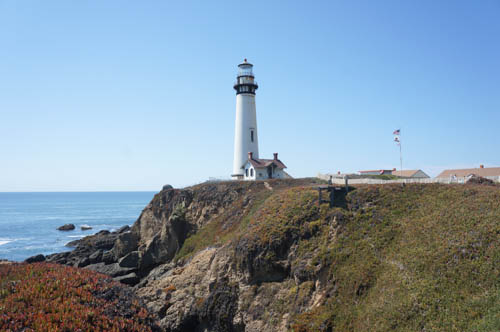
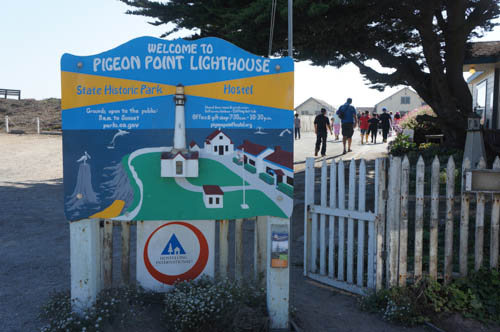
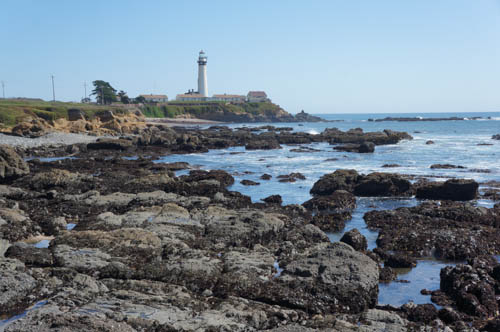
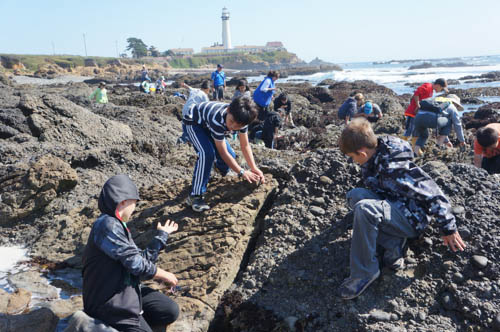
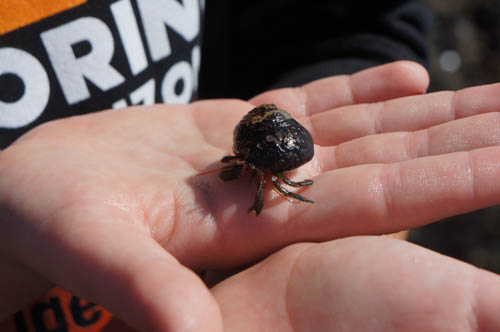
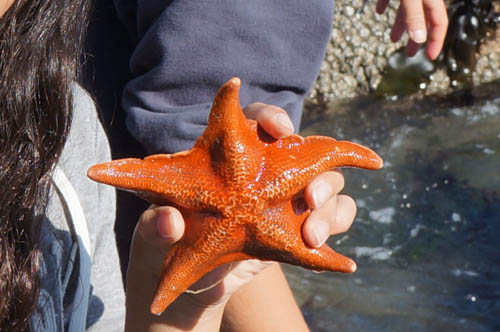
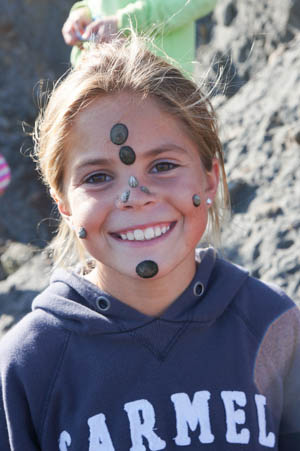

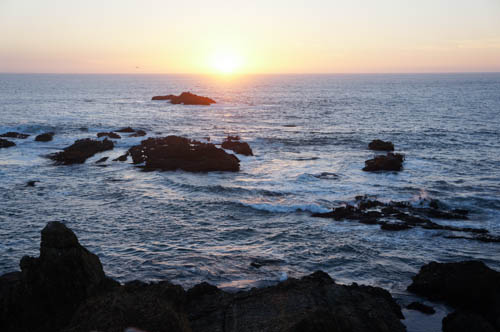
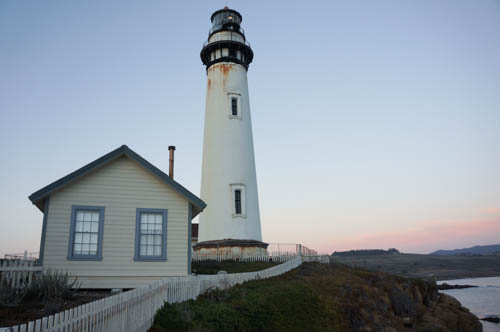
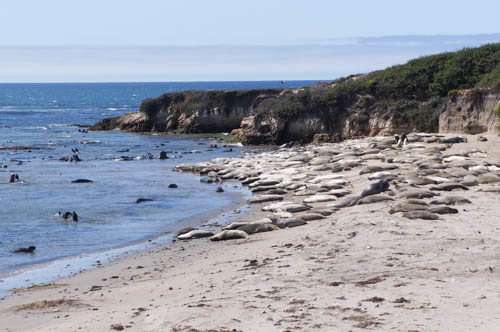
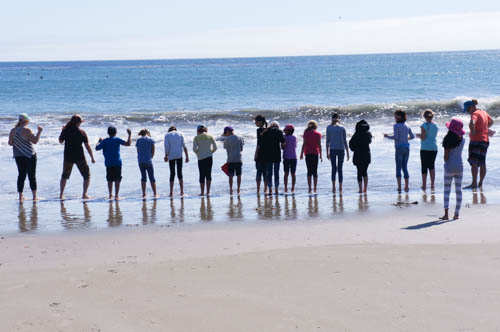


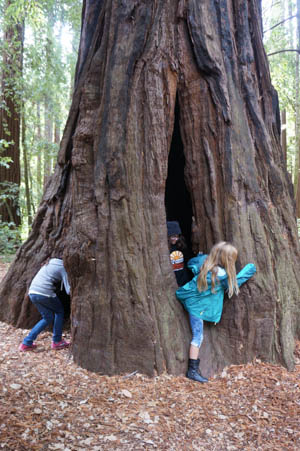
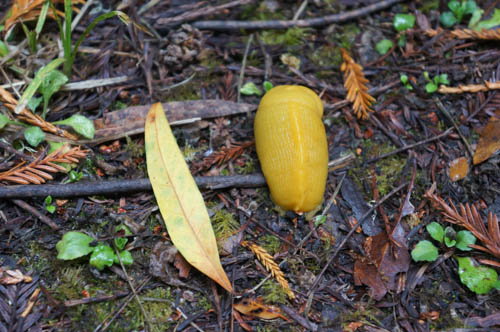
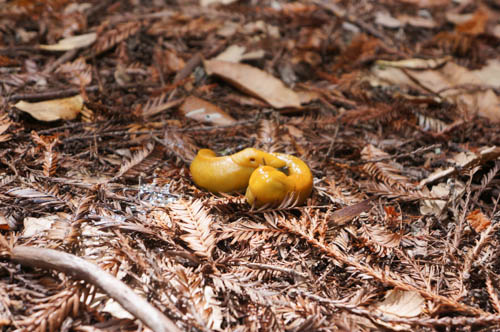
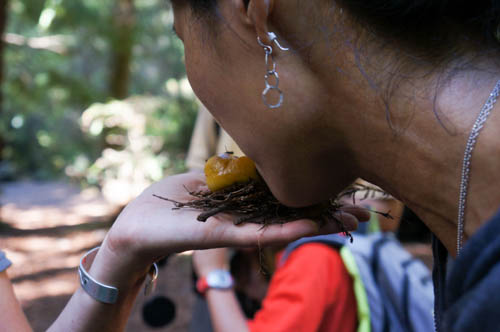
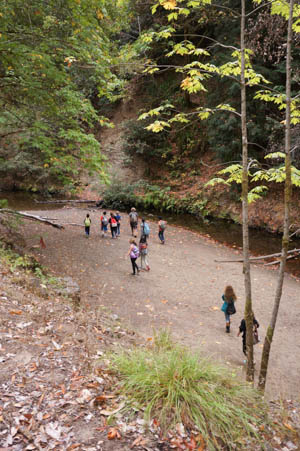
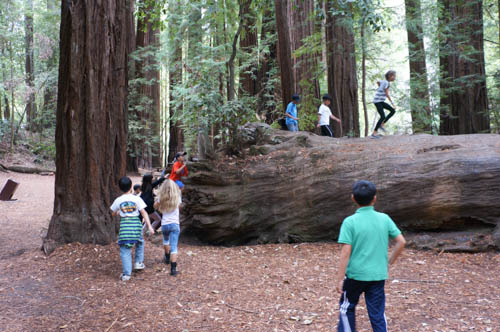
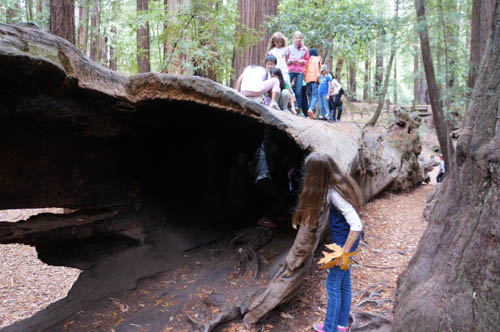
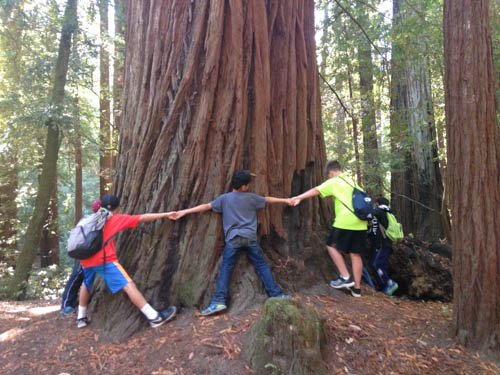




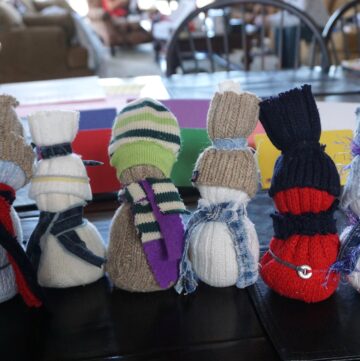
This post warmed my heart. Those are a group of wonderful kids that I miss often. So glad you were able to share in the wonder of Pigeon Point. xo
What a wonderful outing! How lucky you are to have all this on your doorstep! We love the outdoors, and my favourite times are walking in the woods with our dog.
Beautiful pictures and wonderful outings. We live very close to Berkekey but I haven’t been to the light house yet, it seems the children had a lot of fun. We’ll check it out this week. Thanks for sharing CG! Have you been to Tilden Park in Orinda/Berkekey? It’s one of my favorite parks in the area, my parents and the kids really love the rides through the park :).